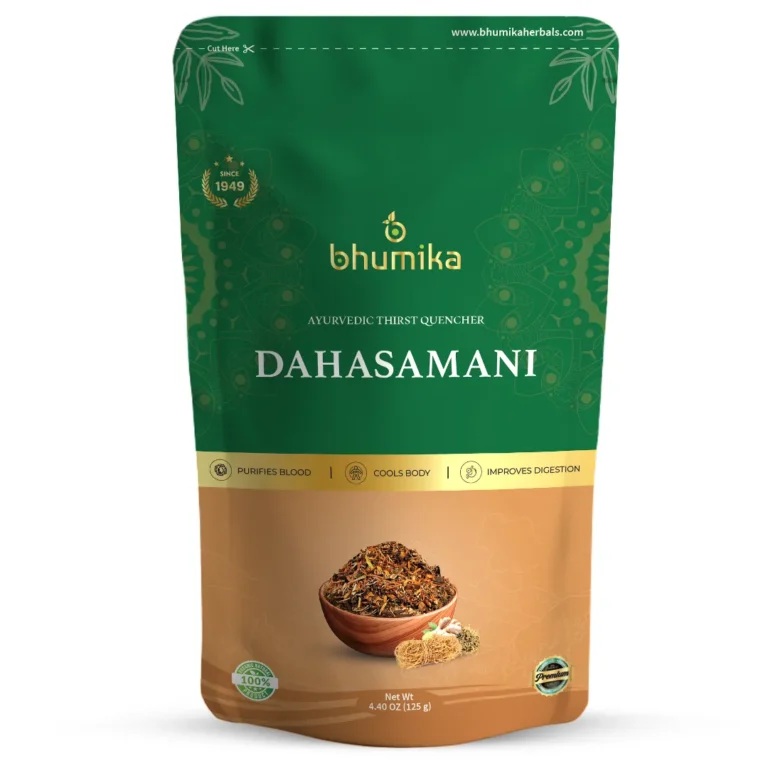Effective Ayurvedic Treatments for Migraine Relief – Natural Remedies & Therapies
Share this!

Migraine is a nightmare for many people, even thinking about it isn’t very pleasant. Migraine is a common, long-term condition that causes recurring headaches, sometimes with other symptoms like visual disturbances (aura).
Consuming painkillers is the most popular remedy used to overcome migraine. As consuming painkillers is not good for our health, there has been an increase in the search for Ayurvedic treatments for migraine. For them, Ayurveda offers some efficient treatment methods. Let’s discuss potent Ayurvedic treatments for migraine.
| Table of Contents: |
What is a Migraine?
Migraine is a neurological condition characterised by intense, recurring headaches. These headaches can last for hours or even days. In most cases, it can be accompanied by other symptoms like nausea, vomiting, and sensitivity to light or sound. Some people also experience visual disturbances, known as auras, before the headache begins. Migraine can be triggered by various factors such as stress, certain foods, hormonal changes, or environmental conditions.
According to different databases, it affects around 6-8% of men and 12-15% of women. On average, about 3,000 out of a million are suffering migraine problems in a day. So migraine is very common among people.
What Is Migraine in Terms of Ayurveda?
In Ayurveda, migraine is called Ardhavabhedaka, which typically affects one side of the head. It is believed that the imbalance in the doshas, namely, Vata and Pitta, causes it. Stress, poor diet, lack of sleep, and mental strain are the major reasons for these imbalances, which lead to migraine.
Ayurvedic treatment for migraine restores the balance of doshas through natural remedies. It includes a healthy diet, lifestyle changes, and relaxation techniques to relieve migraines.
Symptoms of Migraine
Migraine symptoms often include:
- Intense headache: usually on one side of the head, but it can affect both sides.
- Throbbing Pain: The headache feels like a strong, pulsing pain.
- Nausea: feeling sick to your stomach, sometimes leading to vomiting.
- Sensitivity to Light and Sound: Bright lights and loud noises can worsen pain.
- Aura: Some people see flashing lights or patterns before the headache starts.
- Extreme Tiredness: Migraines can leave you feeling very tired or drained.
- Sensitivity to Smells: Certain smells can make the symptoms worse.
- Neck Pain: Some people experience neck stiffness, pain, and headache.
These symptoms can last anywhere from a few hours to a few days and vary in how severe they are.
Ayurvedic Treatments for Migraine

Ayurveda offers several natural remedies to help manage and prevent migraines by balancing the body’s energies:
Herbal Remedies for Migraines
- Sutshekhar Rasa and Godanti Bhasma: These two are the traditionally used Ayurvedic medicines to reduce headaches.
How to use: Take 1-2 grams of Godanti Bhasma per day.
Take 1-2 tablets( 125mg – 250mg) of Sutshekhar Ras twice daily with honey/milk or as advised by a physician.
- Brahmi: Brahmi is a potent Ayurvedic remedy for migraines as it promotes sleep, reduces stress, and calms your mind.
How to use: Apart from the medications that contain brahmi, you can also use brahmi oil and pastes to relieve migraines. Massage them onto the scalp or apply the oil to your nostrils.
- Shankhpushpi: Shankpushpi is another significant herb that can provide relief from migraine, calm your mind and soothe irritated nerves
How to use: To treat migraine, massage your forehead with Shankhpushpi oil
- Ashwagandha: Ashwagandha can reduce stress, which is one of the primary reasons for migraine. Ashwagandha’s anti-inflammatory and stress-relieving properties make it an effective remedy for migraine.
How to use: Ashwagandha is available in capsules, liquid extract and powdered form. Consult an Ayurvedic practitioner to decide the dose of consumption.
- Feverfew: This herb is known for its anti-inflammatory properties. Feverfew can help to reduce the intensity and frequency of migraines.
How to Use: You can consume it as tea or a supplement.
- Ginger: Ginger is effective for migraine relief due to its anti-inflammatory and pain-relieving effects. It also helps to prevent nausea and problems related to digestion.
How to Use: You can use this in tea, add it to your meals, or consume it directly.
- Peppermint: Using peppermint provides a cooling effect and can relax muscles, which helps relieve headaches and migraines.
How to Use: Applying some diluted peppermint oil to your temples or inhaling it may bring relief.
- Coriander: Coriander seeds have cooling and soothing properties, which can reduce pain and inflammation related to migraine.
How to Use: Soak some coriander seeds in water overnight and drink that water in the morning.
Panchakarma Therapy for Migraine

Panchakarma therapy is an Ayurvedic treatment based on three doshas and the elimination of toxins. Panchakarma therapy may help you to relieve migraine, or panchakarma therapy may reduce the intensity of migraine. Here are some commonly used panchakarma therapies for migraine.
Vamana (Vomiting Therapy)
This treatment involves controlled vomiting. This method is used to clear out excess mucus and toxins from our bodies. It may reduce the frequency and intensity of migraines by removing toxins from the body.
Virechana (Purgation Therapy)
Virechana is nothing but using herbal laxatives to cleanse the intestines. This helps to flush out excess heat and toxins from our bodies, which may relieve migraine symptoms.
Nasya (Nasal Therapy)
In the Nasya therapy, medicated oils or herbal powders are gently pumped through the nose. This helps clear the sinuses. Which may help to reduce headaches, a major symptom of migraine.
Shirodhara
This treatment involves gently pouring warm herbal oil over your forehead. This treatment is deeply relaxing and helps to calm the mind and body. Which also helps to reduce stress and tension that can trigger migraines.
Shirovasti Therapy for Migraine
In this therapy, warm herbal oil is held on the head using a special cap. It nourishes the scalp and helps to relieve headaches by balancing the body’s energies.
Yoga for Migraine
Yoga is another commonly used method against migraine. Let’s explore some asanas to relieve migraine.
- Balasana: This is a gentle resting pose. It helps to calm the mind and body, which relieves tension and keeps our body relaxed.
- Paschimottanasana: This pose stretches the spine and calms the nervous system, which helps to ease headaches and reduce stress.
- Setu Bandhasana: This pose opens up the chest area and improves blood flow to the brain, which may help prevent migraine symptoms.
- Breathing exercises: This technique balances the nervous system and calms the mind. It may help to relieve migraines.
- Meditation: Practicing meditation may help prevent migraines by helping regulate stress.
Migraine is a common condition, and it isn’t easy to cope with it. Incorporating Ayurvedic treatments for migraine may help to prevent migraines effectively. So, concur with your enemy with the help of nature.
Related Topics
| Ayurvedic Medicine for Knee Pain | Ayurvedic Medicine for Bp Control |
| Ayurvedic Medicine for Memory | Ayurvedic Treatment for Indigestion |
Frequently Asked Questions on Ayurvedic Treatments for Migraine
What is the Ayurvedic approach to treating migraines?
In Ayurveda, migraines are seen as a result of imbalances in the Vata and Pitta doshas. The treatment focuses on restoring balance through herbal remedies, Panchakarma therapies, dietary changes, and lifestyle adjustments.
Which Ayurvedic herbs are beneficial for migraine relief?
Ayurvedic herbs such as Brahmi, Ashwagandha, Shankhpushpi, and Ginger are commonly used to manage migraines. These herbs help reduce stress, calm the nervous system, and relieve headache pain.
How does Panchakarma therapy help with migraines?
Panchakarma therapy detoxifies the body and balances the doshas. Treatments like Vamana, Virechana, Nasya, Shirodhara, and Shirovasti are particularly effective in reducing the frequency and severity of migraines.
Can yoga help in managing migraines?
Yes, certain yoga poses like Balasana, Paschimottanasana, and Setu Bandhasana, along with breathing exercises and meditation, can help reduce migraine symptoms by calming the mind and relieving tension.
Are there any dietary recommendations in Ayurveda for preventing migraines?
Ayurveda suggests a balanced diet that reduces Pitta and Vata aggravation. Avoiding trigger foods like spicy, fried, and processed items and incorporating cooling, nourishing foods like fresh fruits, vegetables, and whole grains is recommended.
Share this!
Share this!
Shop by Concern
Acne & Pimples (8) Dandruff & Scalp Itchiness (6) Dark Circles & Puffy Eyes (4) Dead Skin Cells (5) Dehydrated Skin (4) Dry & Damaged Hair (5) Dryness (4) Dry Scalp (6) Dry Skin (3) Dull Skin (7) Excessive Oilness (4) Face Care (8) Fine Lines & Wrinkles (7) Greying (3) Hair Care (8) Hairfall (6) Hair Loss & Growth (6) Hyper Pigmentation (5) Post Partum Hairloss (2) Skin Brightening (8) Skin Care (7) Stretch Marks (3) Tanned Skin (5) Uneven Skin Tone/ Pigmentation (5) Uneven Skintone/ Texture (5)








